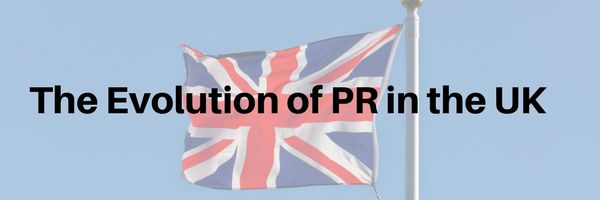
The Evolution of PR in the UK - International Speaker - Susanne Kirlew
The evolution of public relations varies depending on which part of the world you focus on. For example, in the USA, a number of American precursors to public relations are found in the form of publicists who specialised in promoting circuses, theatrical performances, and other public spectacles. Many early public relations practices in the USA were developed in support of railroads. In fact, many scholars believe that the first appearance of the term "public relations" appeared in the 1897 Year Book of Railway Literature (Forman, 2001). Phineas T Barnum—the great American showman of the 19th century was the master publicist best remembered for his Barnum & Bailey three ring circuses(Seitel, ,2001).
Henry Ford is recognised as the first major industrialist to use two basic PR concepts: “positioning” – the idea that credit and publicity always go to those who do something first, and ready accessibility to the press (Griffin, 2002). Theodore Roosevelt: proved a master in generating publicity. He was the first president to make extensive use of news conferences and interviews to drum up support for his projects, and he knew the value of the presidential tour for publicity purposes Juergens (1982)
Public relations in the UK, dates back to the early 1800’s. The British Treasury appointed a press spokesman in 1809. In addition, the Post Office, in its first annual report, in 1854, declared it a necessity to explain its services to the public(Jefkins, 1998). The 1900s saw PR evolve even further. In 1912 – Lloyd George, Chancellor of the Exchequer organised a team of lecturers to explain the first old-age scheme. Between 1926 and 1933, Stephen Tallents spearheaded one of the biggest PR efforts in Britain on behalf of the Empire Market Board. One million pounds was spent to raise the profile and awareness of fruits and other Empire products to the British public. This is a significant amount of money as, even today, that amount of money spent on public relations is still a significant amount. This amount indicates the validity of public relations and indeed how it is seen as a practice worth investing in. This PR effort was done using films, posters and exhibitions. Tallents employed the British documentary film-maker John Grierson and commissioned artists including: Clive Gardiner, E McKnight Kauffer, and Frank Newbould to produce a series of large posters, promoting British and Empire produce. Later, in 1948, Stephen Tallents became the first president of the Institute of Public Relations (IPR) Moloney,(2000). This had a very positive implication for public relations as it highlighted and validated the practice as trustworthy and effective.
The evolution of PR in the UK came about at the turn of the twentieth century. PR evolved in the UK & US in response to the democratisation that followed increasing social unrest and the rise of organised labour. Former nineteenth century social and political reform led to the rapid democratisation in the early twentieth century(Lesly, 1998) The term “public relations” was used in local government in the UK from the 1920s when local government officers were faced with the mammoth task of communicating change and new rights for citizens(L’Etang, 2008).Two further explanations of the evolution of PR are firstly, that the appearance of PR follows businesses having a change in their attitude toward social responsibilities and secondly, it came from a defence against anti-business sentiment.
Tench and Yeomans (2009).
The history of PR in the UK has its origins in public service information traditions that mainly include the local and central government supply of information. Stephen Tallents (A British civil servant and public relations expert) book entitled “Projection of England” (1932). Which was influential in persuading policy makers of the benefits of a propaganda policy. Tallents was active in producing propaganda for both world wars and was the founder of several PR companies in the interwar period.
Tench and Yeomans (2009). Tallents went on to be the first president of the Institute of Public Relations in 1956.
The USA cannot be ignored when looking at the evolution of PR. Even though there are examples of PR practices mentioned by some theorists that date back to before the twentieth century, it can be argued that the more modern version of Public Relations began with PR pioneers like Phineas Taylor Barnum, Ivy Lee, Edward L. Bernays, George Creel and others.Theaker (2001)
The USA seems to be further ahead in recognising the value of public relations education. Public relations courses at universities in the USA date back to as early as 1920. The first public relations course was offered at the New York University and was taught by Edward Bernays. Theaker (2001)
�.Ў�
